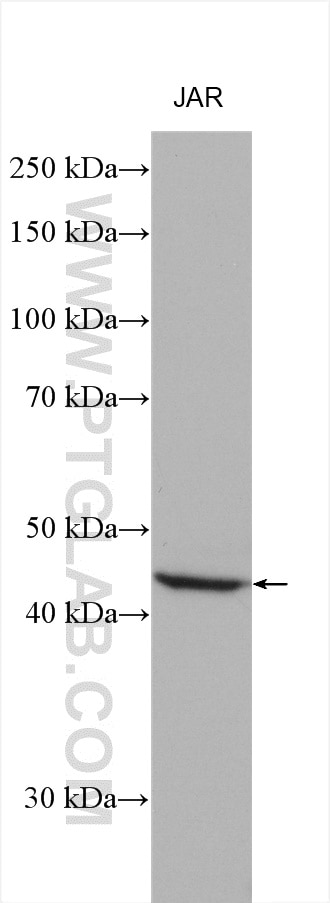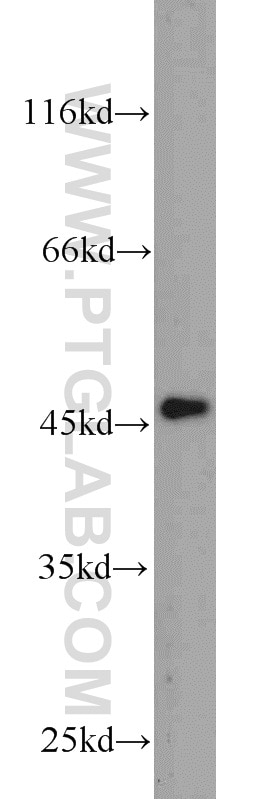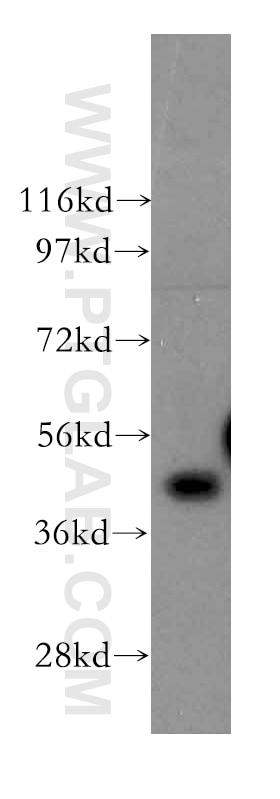- Phare
- Validé par KD/KO
Anticorps Polyclonal de lapin anti-FNTA
FNTA Polyclonal Antibody for WB, ELISA
Hôte / Isotype
Lapin / IgG
Réactivité testée
Humain, rat, souris
Applications
WB, ELISA
Conjugaison
Non conjugué
N° de cat : 12274-1-AP
Synonymes
Galerie de données de validation
Applications testées
| Résultats positifs en WB | cellules JAR, cellules 3T3-L1, cellules NIH/3T3 |
Dilution recommandée
| Application | Dilution |
|---|---|
| Western Blot (WB) | WB : 1:500-1:1000 |
| It is recommended that this reagent should be titrated in each testing system to obtain optimal results. | |
| Sample-dependent, check data in validation data gallery | |
Applications publiées
| KD/KO | See 2 publications below |
| WB | See 2 publications below |
Informations sur le produit
12274-1-AP cible FNTA dans les applications de WB, ELISA et montre une réactivité avec des échantillons Humain, rat, souris
| Réactivité | Humain, rat, souris |
| Réactivité citée | Humain, souris |
| Hôte / Isotype | Lapin / IgG |
| Clonalité | Polyclonal |
| Type | Anticorps |
| Immunogène | FNTA Protéine recombinante Ag2918 |
| Nom complet | farnesyltransferase, CAAX box, alpha |
| Masse moléculaire calculée | 44 kDa |
| Poids moléculaire observé | 44 kDa |
| Numéro d’acquisition GenBank | BC017029 |
| Symbole du gène | FNTA |
| Identification du gène (NCBI) | 2339 |
| Conjugaison | Non conjugué |
| Forme | Liquide |
| Méthode de purification | Purification par affinité contre l'antigène |
| Tampon de stockage | PBS avec azoture de sodium à 0,02 % et glycérol à 50 % pH 7,3 |
| Conditions de stockage | Stocker à -20°C. Stable pendant un an après l'expédition. L'aliquotage n'est pas nécessaire pour le stockage à -20oC Les 20ul contiennent 0,1% de BSA. |
Protocole
| Product Specific Protocols | |
|---|---|
| WB protocol for FNTA antibody 12274-1-AP | Download protocol |
| Standard Protocols | |
|---|---|
| Click here to view our Standard Protocols |
Publications
| Species | Application | Title |
|---|---|---|
Front Pharmacol Lonafarnib Inhibits Farnesyltransferase via Suppressing ERK Signaling Pathway to Prevent Osteoclastogenesis in Titanium Particle-Induced Osteolysis.
| ||
Cell Biol Int Silencing geranylgeranyltransferase I inhibits the migration and invasion of salivary adenoid cystic carcinoma through RhoA/ROCK1/MLC signaling and suppresses proliferation through cell cycle regulation
|




